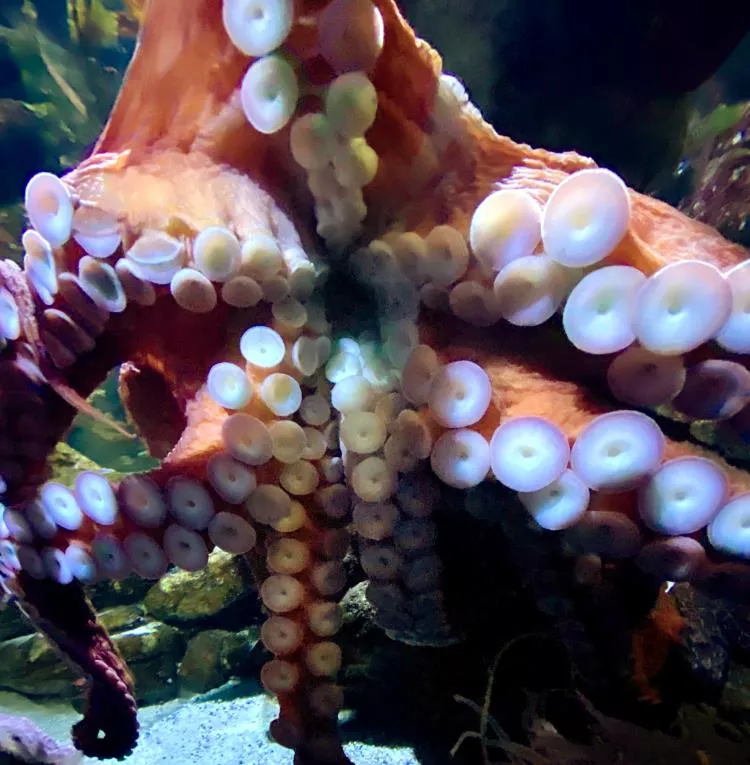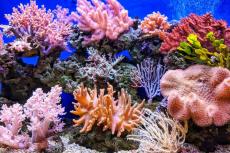Arms all over
Octopus suckers are actually beautiful little tools, though, with a fair amount of sophistication in their organization.
Don't compare them to the simple rubber suction cups on kids' toy dart guns; these have their own elaborate muscular regulatory mechanisms. This diagram illustrates the internal structure of a single octopus sucker.
There are two main regions, an infundibulum (IN) on the attachment face of the sucker, and a deeper chamber called the acetabulum (A) (if you don't recall any Latin, "infundibulum" just means "funnel", while "acetabulum" is "vinegar cup"â anatomy is littered with funnels and cup-shaped structures, so these are actually very generic names).
Both regions are muscular, covered with a dense sheet of radial muscles (R) and rings of circular and meridional muscles (C and M). The whole thing is surrounded by supple sheets of connective tissue and epithelia.
Suckers
The way it works is that the sucker is pressed against a surface, and the flexible outer margin of skin conforms to it, forming a seal. Then the radial muscles contract. Now muscle is a relatively incompressible tissue; when it contracts, it changes its length, but it cannot change its volume. When you make a muscle in your arm to show off to the girls, you are reducing the length of the bicep, so it has to bulge outwards to maintain a constant volume. This principle is also how your tongue works: when muscles contract to flatten it, the volume has to stay the same so it protrudes.
When the radial muscles in the sucker contract, the walls of the acetabulum and infundibulum get thinner. The muscle volume has to go somewhere, so the circumference of the cup-shaped acetabulum has to increase, increasing the volume of the acetabular chamber. Since the infundibulum is sealed against a surface, water can't get in; so we have the same quantity of water in a larger chamber, which means the pressure is reduced, generating suction. They can release their grip by relaxing the radial muscles, or contracting the circular muscles, which would reduce the volume of the acetabulum.
An octopus can generate a respectable amount of force with this mechanism. At sea level, they can create a pressure differential of 100-200 kPa (kilopascals; 100 kilopascals is approximately equal to one atmosphere), and at greater depths, where the water pressure is greater, they can generate correspondingly greater amounts of force.
A close-up view of the sucker reveals other details.
- Log in to post comments




























